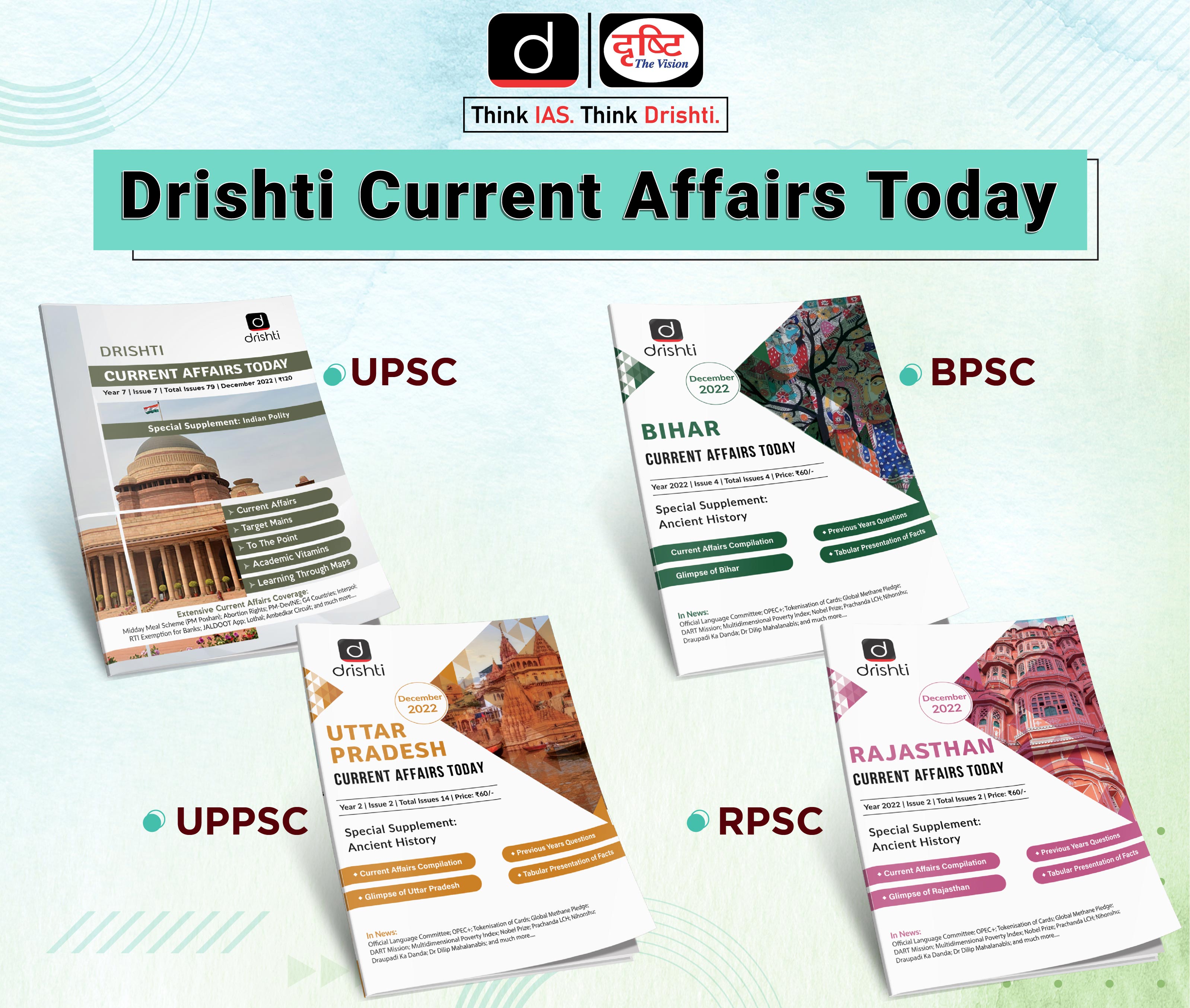Bihar Switch to Hindi
Sustainable Development in Bihar
Why in News?
According to the Tata-Cornell Institute for Agriculture and Nutrition (TCI) at Cornell University, Bihar can make significant progress towards sustainable development by implementing three transformative technologies in the agricultural sector.
Key Points
- In a policy brief it is emphasised that Bihar can reduce the Greenhouse Gas (GHG) emissions associated with rice and livestock production while maintaining or even improving productivity.
- The policy brief discusses a study carried out within TCI’s Zero-Hunger, Zero-Carbon Food Systems project, which seeks to develop a strategy to decrease agricultural emissions in Bihar while maintaining productivity levels.
- Agriculture accounts for 20% of India's GHG emissions nationally, with Bihar being one of the states significantly affected by malnutrition, especially among young children.
- According to TCI research, Bihar could reduce emissions by 9.4-11.2 metric tons each year by adopting alternate wetting and drying for paddy cultivation, advanced artificial insemination for cattle breeding, and anti-methanogenic feed supplements in its livestock sector.
- Research shows that alternate wetting and drying, advanced breeding techniques, and anti-methanogenic feeds can help Bihar to lower its agricultural emissions without damaging productivity.
- The policy presented a breakdown of emissions reductions for each of Bihar’s four agroclimatic zones. For alternate wetting and drying, Bihar’s southwest and northwest zones have the highest potential mitigation levels.
- Bihar’s Four Agroclimatic Zones: Zone-I, North Alluvial Plain, Zone-II, north East Alluvial Plain, Zone-III A South East Alluvial Plain and Zone-III B, South West Alluvial Plain
- The policy presented a breakdown of emissions reductions for each of Bihar’s four agroclimatic zones. For alternate wetting and drying, Bihar’s southwest and northwest zones have the highest potential mitigation levels.
Note
Indian Council of Agricultural Research (ICAR) has developed an anti-methanogenic feed supplement ‘Harit Dhara’ (HD), which can cut down cattle methane emissions by 17-20% and can also result in higher milk production.


Bihar Switch to Hindi
Special Category Status for Bihar
Why in News?
Bihar’s Chief Minister Nitish Kumar reiterated the state's longstanding demand for special category status from the Centre.
- This status would lead to an increase in the tax revenues that Bihar receives from the Centre.
Key Points
- One of the key concerns is Bihar's low per capita income, which is around ₹60,000, among the lowest in the country. Additionally, the State lags behind the national average in various human development indicators.
- Furthermore, Bihar's fiscal situation has been negatively impacted by factors such as the bifurcation of the State, leading to industries moving to Jharkhand, lack of adequate water resources for irrigation, and frequent natural disasters.
- Bihar's caste based survey of 2022 shows that nearly a third of the State’s people live under the poverty line.
- In 2023, the Bihar government estimated that the granting of the special category status will help the State receive an additional 2.5 lakh crore rupees over five years to spend on the welfare of 94 lakh crore poor families.
- Historically, States like Bihar and Uttar Pradesh suffered slow growth and high poverty levels due to poor rule of law that discouraged investments considered crucial to boosting growth.
- But now, as one of the fastest growing States in the country, despite originating from a lower starting point, Bihar has managed to increase its per capita income level and also the size of its overall economy at a brisk pace in recent years.
- In 2022-23, for instance, Bihar’s Gross Domestic Product (GDP) grew at 10.6% as against the national average of 7.2% while its per capita income level in real terms grew by 9.4% in 2023.
Special Category Status (SCS)
- About:
- SCS is a classification granted to some States by the Centre to assist development, based on geographical and socio-economic disadvantages.
- The scheme was introduced in 1969 on the recommendation of the Fifth Finance Commission.
- Factors considered for granting SCS to a State:
- Hilly and difficult terrain
- Low population density and/or sizeable share of tribal population
- Strategic location along international borders
- Economic and infrastructural backwardness
- Non-viable nature of State finances
- The 14th Finance Commission has done away with the 'special category status' for states, except for the Northeastern and three hill states.
- States with Special Status: Arunachal Pradesh, Assam, Himachal Pradesh, Jammu and Kashmir, Manipur, Meghalaya, Mizoram, Nagaland, Sikkim, Tripura, and Uttarakhand.


Uttarakhand Switch to Hindi
'Home of the Himalayas' Initiative
Why in News?
Recently, the Uttarakhand Tourism Development Board (UTDB) has partnered with Prime Focus Technologies (PFT) to bolster tourism promotion of the picturesque Adi Kailash & Om Parvat. PFT is renowned for its AI prowess and exceptional media services.
- The partnership aims to create videos of the region under the 'Home of the Himalayas' initiative.
Key Points
- The collaboration between UTDB and PFT is expected to give an impetus to position Uttarakhand as a global tourism hotspot, showcasing its diverse landscapes, rich heritage, and unique tourism experiences.
- The "Home of the Himalayas" initiative, coined by PFT, focuses on two key areas:
- refreshing Uttarakhand Tourism brand identity
- creating high-quality content to promote tourism.
- The 'Home of the Himalayas' initiative marks a transformative milestone in Uttarakhand's journey towards global recognition.
Uttarakhand Tourism Development Board (UTDB)
- It advises the Government on all matters relating to tourism in the state. The statutory board is chaired by the Tourism Minister, Government of Uttarakhand, and the Chief Secretary of Uttarakhand is its vice chairman.
- The Principal Secretary/Secretary of Tourism acts as Chief Executive Officer. It also has five non-official members from the private sector and experts in tourism-related matters.
Adi Kailash & Om Parvat
- Adi Kailash is known as Shiva Kailash, Chota Kailash, Baba Kailash or Jonglingkong Peak, is a mountain located in the Himalayan mountain range in the Pithoragarh district of Uttarakhand.
- Om Parvat is also a part of the Kailash Mansarovar Yatra, a pilgrimage that includes visiting Mount Kailash and Lake Mansarovar in Tibet.
- The revered mountains of Adi Kailash & OM Parvat are located on Indo-China border in the Pithoragarh District of Uttarakhand.
- Both peaks bear significant religious importance for devotees of Lord Shiva.


Jharkhand Switch to Hindi
Land Rights of Tribals and SC/ST Act
Why in News?
Recently, Jharkhand’s Chief Minister directed officials to safeguard the land rights of tribals and take quick action to ensure their possession over plots where court rulings are in their favor following disputes.
- Emphasising that Scheduled Tribes (STs) have been the most marginalised and deprived population, it was also directed to officials that all cases registered under the Scheduled Castes and the Scheduled Tribes (Prevention of Atrocities) Act, 1989 be disposed of on a priority basis.
Key Points
- The Constitution of India does not endeavor to define the term 'tribe', however, the term Scheduled Tribe' was inserted in the Constitution through Article 342 (i).
- It lays down that 'the President may, by public notification, specify the tribes or tribal communities or parts of or groups within the tribes or tribal communities or parts which shall, for the purposes of this Constitution, be deemed to be Scheduled Tribes.
- The Fifth Schedule of the Constitution provides for the setting up a Tribes’ Advisory Council in each of the States having Scheduled Areas.
- One of the most significant issues faced by tribal communities is the lack of secure land rights. Many tribes live in forest areas or remote regions where their traditional rights to land and resources are often not recognized, leading to displacement and land alienation.
- SC/ST Act 1989 is an Act of Parliament enacted to prohibit discrimination against SC & ST communities members and prevent atrocities against them.
- The Act was passed in Parliament of India on 11th September 1989 and notified on 30 January 1990.


Jharkhand Switch to Hindi
Abua Awas Scheme
Why in News?
Recently, the Jharkhand Chief Minister directed for speeding up the process of construction of 2 lakh houses in the first phase of the 'Abua Awas' scheme, and emphasized that action will be taken against officers who commit irregularities and negligence in this scheme.
Key Points
- The scheme was launched by former CM Hemant Soren in November 2023 to provide houses to those who were deprived of benefits under the PM Awas Yojana (PMAY).
- Under Abua Awas' scheme (launched in 2023), the state government will provide housing to the needy people from its own fund by spending more than Rs 15,000 crore in the next two years.
- Three room houses will be provided to the poor, deprived, labourers, farmers, tribals, backward and Dalits.
Pradhan Mantri Awas Yojana (PMAY)
- It is a government initiative that aims to provide affordable houses to the urban poor keeping a target of building 2 crore (20 million) houses by 2024.
- The two basic components of the scheme are:
- Pradhan Mantri Awas Yojana- Urban (PMAY-U) looks into the housing requisites of poor urban people. The urban poor has been categorised into three sectors, which depend upon the annual household income:
- (i) Economically Weaker Section (EWS), (ii) Low-income Group (LIG) (iii) Middle Income Group (MIG). Additionally, the slum dwellers within the urban population can also apply to the scheme.
- Pradhan Mantri Awas Yojana- Rural (PMAY-R) has been brought in to help economically weak families living in rural India become property owners. The residences in such rural areas will have all the required basic facilities such as electricity, clean water, a well-developed sewage system, a sanitation facility, etc.








%20MPPCS%202025%20Desktop%20E.jpg)
%20MPPCS%202025%20Mobile%20E%20(1).jpg)










.png)
.png)











 PCS Parikshan
PCS Parikshan

